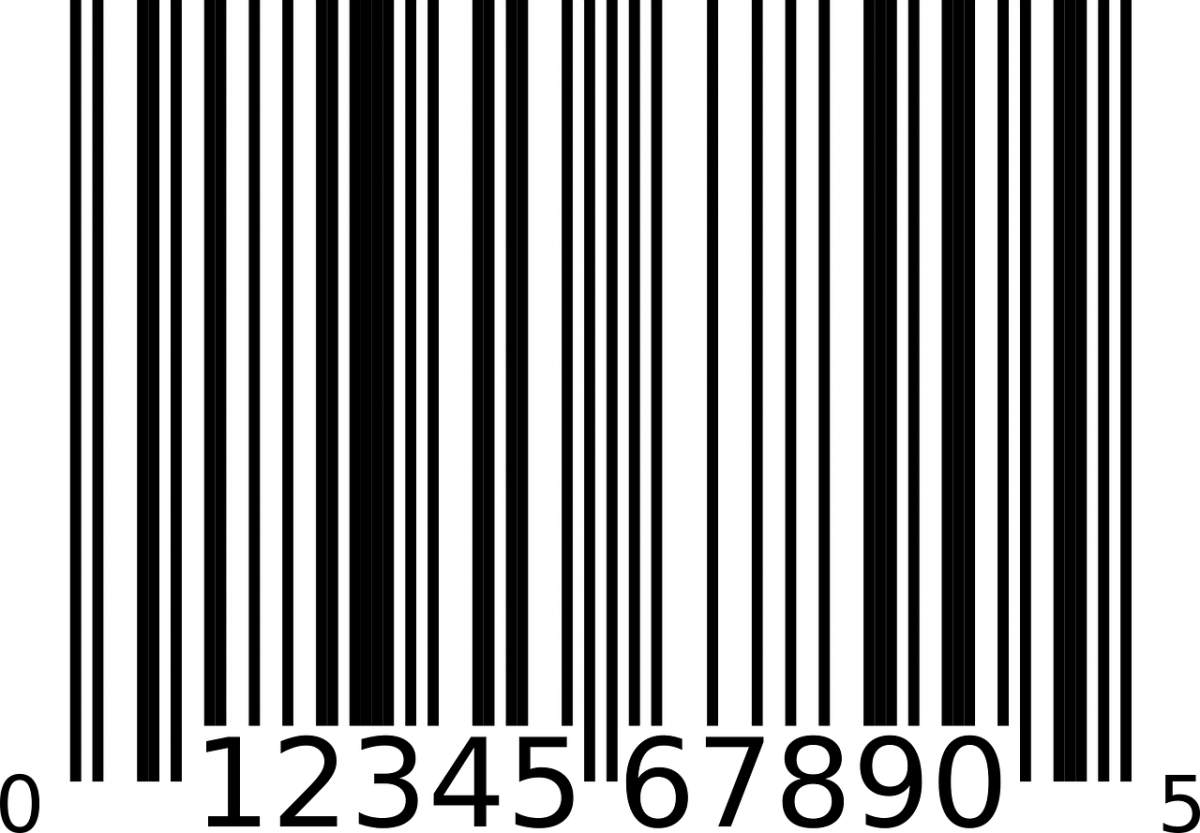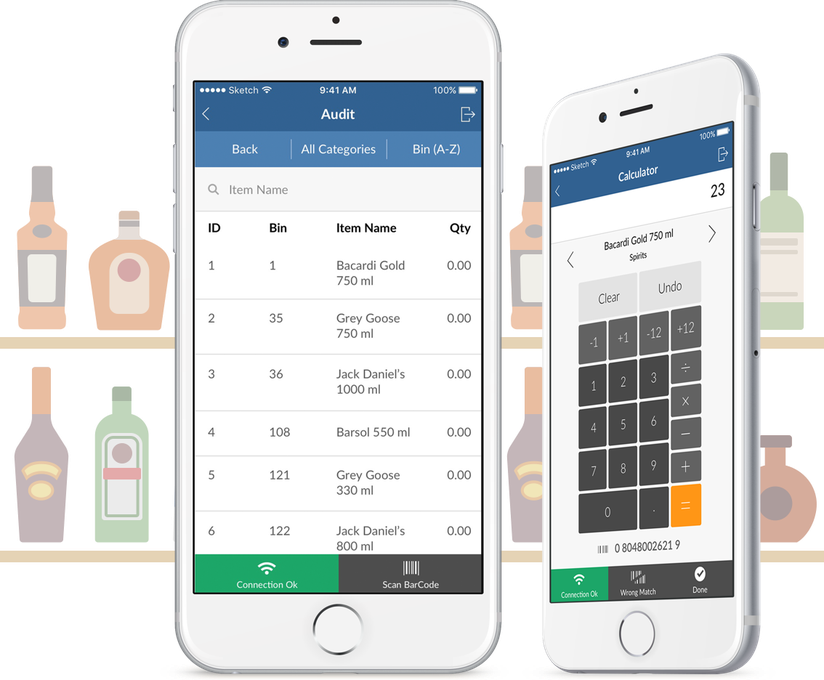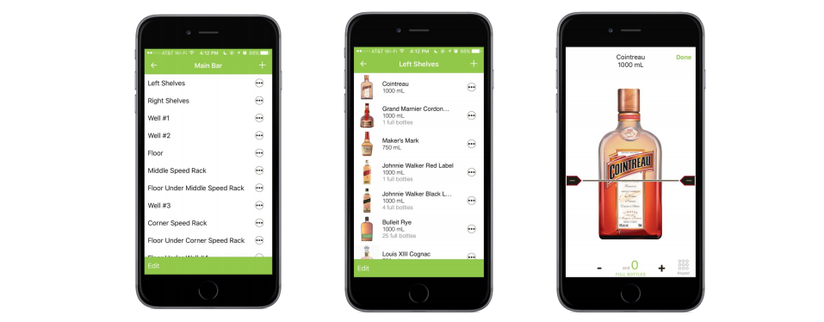
#123
THERE'S AN APP FOR IT
30 May 2017 By David Fuhrmann-Lim
Can Apps Can Solve the Age-Old Problem of Inventory?
There’s An App For It, For Sure.
By Shelby Pope
Like working late hours or cutting off a belligerent customer, taking inventory is a necessary evil of working at a bar. It’s essential to ensure that your sale records match your stock so you can avoid shrinkage and figure out your pour costs. But most bars rely on old-school systems, whether it’s a clipboard and a pencil or the more modern (but still annoying) Excel spreadsheet. It’s a tedious, boring task that takes hours of monotonous work, requiring staff to either come early or stay late.
But what if there were a better way?
Over the last few years, app developers have attempted to solve the problem of inventory, developing secure, streamlined systems that not only record your inventory, but provide analytics. Some even connect with your distributors, simplifying ordering as well as inventory. While the apps have different features and user interfaces, all have the same goals: to free up time spent on inventory so it can be used for other tasks and to give bars more data about what customers are buying. Here are three of the leading options for bars trying to make the switch to a phone-based inventory system.
1. BevSpot

BevSpot began when co-founder Rory Crawford wanted to create a wine club app. While researching on the industry, he was appalled to find out how archaic it was: “I was amazed at how antiquated and old school a lot of distributor vendors are: the need to place phone call orders, the booklets with product information, paper invoices in a filing cabinet,” he says. “It was very difficult for me to track my expenses.”
In 2014, he co-founded BevSpot, which is now used in bars across the country from Hobnob in Jacksonville to State Park in Cambridge.
BevSpot takes care of inputting your bottles into the app and training your team. Multiple people can contribute to the same inventory — so you can inventory the bar while your coworker tackles the storage room. The app also syncs with all major POS system. They offer analytics, including charts of your top performers, as well as what’s sitting dusty and full behind the bar. There’s also an algorithm that helps you price your drinks, which you can test out on on their website. (All of the information is stored in the cloud, using the same kind of security as Amazon).
Bevspot is also willing to take on another annoying task: ordering. If you add your distributor info, BevSpot will collect it in one central location, so you don’t have to continue juggling 10 different systems for 10 different reps. They even have a feature called smart par, where if you’ve set your par levels in the app, it’ll sync with your inventory data to produce a customized order for you — all you need to do is press the button to send it off.
The app also includes your very own consultant — for a price. Premium users are partnered with BevSpot staffers who have backgrounds managing bars, who give them periodic reports to help make sense of their data and specific examples of how a bar can increase their profits.
“… Owners think about their bar as any other business, [one] that has a supply chain,” says Alex Turnwall, BevSpot’s chief design officer. “The first thing is reducing the amount of inventory that people have on hand. The more inventory you carry over time, that is money that’s tied up in the business that could be used for other things. By using our basic tool, we see people gradually reducing the amount of inventory they hold over time, which allows them to put more money into the business.”
Recently, Turnwall asked a client in Boston with multiple locations how much money the app had saved his bar over the first six months. He already knew how much (more than $20,000) but was curious to hear the owner’s impression.
“He looked at me, and he’s like ‘I don’t even give a shit. The amount of time and the amount of headache you take off my bar manager’s back, and get[ting] them back on the floor — that is the most important thing,’” Turnwall says. “It’s cool to see something that was such a drag for me back in the day, now they can just do it really quickly.
2. Bevager

When Sam Zats was in business school, a friend reached out in a panic. The friend was making their way up the ranks at a high-end bar, and while he felt confident with most of his duties, the business side — making P&Ls, figuring out pour costs — confused him. Zats taught him some basic Excel and started brainstorming. In 2014, Zats founded Bevager, an app to help bar industry folks like his friend that’s now used at places like the Thomas Keller and Michael Mina restaurant groups. He describes them as an “end to end” service: you scan bottle barcodes to take inventory, and once you’ve filled out your account information, they’ll take over ordering for you. After you’ve received an order, scan or take a picture of an invoice, and it’ll add the order to your inventory and send the information to your accounting software.
“At Smuggler’s Cove and Whitechapel we have the largest rum and gin selections, respectively, in North America. Maintaining accurate lists of each, especially for our club members, was always a time-consuming challenge,” says the bars’ co-owner Rebecca Cate.
“The fact that the Bevager system allows multiple people to do inventory simultaneously has been a great solution for us. Even more helpful is that our clubs are now entirely online through Bevager as well. This means that when a rum (or gin) goes out of stock, we can update the list in real time, saving the staff the time of hunting for an item that isn’t there, and saving the guest having to wait only to be disappointed and have to order something else.”
Bevager also offers analytics, down to each ticket, so you can see how your pour cost is reflected in a night’s orders. It’s a responsive system: if you get an invoice that the price of Fernet has gone up, it will recost your menu. Say you’ve come up with a brilliant new cocktail recipe — when you add it into the system, it will alert you if your new drink exceeds a predetermined cost percentage.
“Inventory dictates how you order, inventory dictates how what you put on the menu, inventory dictates how much you sell it for,” Zats says. “We see end-to-end as what do I buy, how much do I buy, how much do I pay for it, how much do I have, and how much do I sell it for and then after I sell it, how much do I make? If you’re getting prices in every week, and your menu is being recosted in live time, that means you’re going to optimize your profitability. Because we’re integrated with point of sale, we can actually do profit volume engineering reports and tell you look, your highest mover is actually the one that is costing you the most.”
Bevager is also a great choice if your bar offers food — it has a sister app, Foodager, that provides similar services for kitchens.
3. Partender

A few years ago, Nik Kundra started talking to a girl. He asked her to hang out. She couldn’t, she explained that she was a bartender, and that night was inventory night. She would be busy early the next morning.
The next day, Kundra was at a hackathon, an all-day event where programmers compete to build the day’s most innovative product. Kundra’s team was scrambling for an idea, until he remembered the girl and all the hours she had to spend doing inventory with pen and paper. Inspired, his team built a basic version of what, in 2012, entered the market as Partender. (If the name sounds familiar, you might have heard Jon Taffer scream it at a sloppy staff on Bar Rescue.)
“I worked front of the house in restaurants for six years. Things are either archaic, or the tech is like this legacy piece of shit that just doesn’t work, [that] creates more work for you,” says Kundra’s sister Anjali, the company’s co-founder. “That’s why we strive to make Partender as simple as possible. One of our first customers was Antoine’s in New Orleans — they have this 70-year-old guy doing inventory on his smart phone.”

Partender claims that with their software, you can finish inventory in 15 minutes. Instead of the traditional 10 point scale method of estimating how much is left in bottles, with their app, you simply drag a marker on an image of a bottle to indicate how much is left, and then swipe to the next bottle (some of their investors call Partender “Tinder for inventory.”) Afterwards, simply hit run report, and you’ll get a purchase order, broken up by distributor. They also have an analytics dashboard where you can do things like track how two different brands of rye are selling or easily identify dead stock.
Their simple approach to makes it so anyone, regardless of skill level or industry experience can quickly learn inventory, and its simplicity has gained them clients like the Marriott and the Gerber Group.
“Our customers do a great job finding new value in all the inventory they’re sitting on. It’s about counting your liquid cash as often as you’re counting your regular cash,” Kundra says. “You get that tangible ROI and you’re making more revenue. You’re purchasing more of what’s selling, you’re not running out of things.”
Inventory is one of the most common ways for a manager to keep track of their staff’s performance. But Kundra stresses that their goal isn’t to foster divisions between bartenders and managers: “There’s always been this idea of inventory being a policing mechanism, and we are the furthest away from that. We want our customers to use this transparency to improve their company culture. It’s really about increasing the data, the transparency so you can ask better questions.”
One of Partender’s customers in Portland had an elaborate, homegrown inventory system. After meeting the Kundras at Tales, he switched to Partender. The next year, they asked him how it was going.
“He told my brother, ‘Hey I just want to let you know — you’ve given me so much time back that I can spend that with my kids,’” Kundra says “Time is the most valuable resource that we can never get back. We can make a buck back tomorrow, but we can’t get that time back.”
Read it at Tales of the Cocktail
Like this?

You might be interested in...
NEW BEGINNINGS
New Year, New Gins, Isn't That How The Saying Goes? In Any Case, Here Are Three Unique Gins From Three Different Countries That'll Be Your Tonic to The New Year.
DRINK HERE NOW 2017
The Drink Here Now team has compiled a list of 263 (yes, random) bars around the world that matter most, right now. Which one is a winner from your city?
5 BOTTLES YOUR HOME BAR CAN'T DO WITHOUT
These ingredients aren’t usually seen at home – but their presence opens up a realm of cocktail possibilities. Here are five bottles your liquor cabinet can't do without
NEW BEGINNINGS
DRINK HERE NOW 2017
5 BOTTLES YOUR HOME BAR CAN'T DO WITHOUT